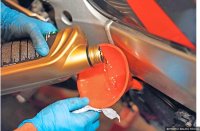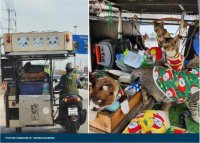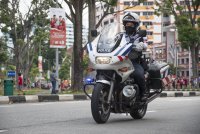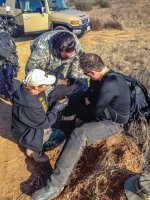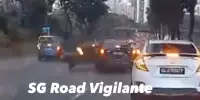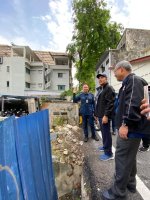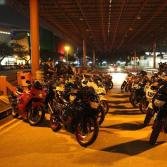.thumb.jpg.942d9c8d2090d78b3319f3cc3d3744e6.jpg)

The Singapore Police Force (SPF) confirmed the arrest of the two men caught fighting with helmets at Woodlands Checkpoint and are investigating them for the offence of affray. You may read the full updates below.
On days when there’s heavy traffic, it can easily take a few hours to get from one end of the Causeway to the other.
And when that happens, it’s easy for drivers’ tempers to flare.
That’s presumably what happened when two men were seen fighting at Woodlands Checkpoint.
Source: Facebook
In a short viral video, the pair were spotted hitting each other with motorcycle helmets as other riders watched.
Men fight with helmets at Woodlands Checkpoint, ends hilariously
The TikTok video was reposted on the Malaysia-Singapore Border Crossers(MSBC) 马新过境者 Facebook group and has garnered over 500 shares at the time of this article.
In the 10-second clip, a man in blue starts by slamming a motorcycle helmet on the back of a man in a purple t-shirt.
The swing was filled with so much vigour that the helmet ricocheted off the man in purple.
Source: Facebook
Without flinching, the man in blue threw one more punch before realising he was unarmed.
The man in purple then got back on his feet and checked over his shoulder for his assailant.
Source: Facebook
Realising his attacker was scrambling for his helmet, the man in purple took the chance to hit his foe.
However, just like his attacker, he lost grip on his helmet and after a single strike, was also left unarmed.
Source: Facebook
Now vulnerable as before, his attacker took the chance to smack the other man’s head with a helmet.
The impact seemed to have awoken a new side in the long-haired man as he skillfully dodged the next blow.
Trying to end the altercation, the man in purple pulled his attacker’s jacket over their head.
Source: Facebook
The video ends with the attacker stumbling around the crowded motorcycle lane at Woodlands checkpoint with a jacket over his head.
Authorities detain 2 men after fight at Woodlands Checkpoint
The duo did eventually end up in trouble with the law. In a media release on 5 May, SPF shared that they detained the two men while they were entering Singapore on Monday (3 May).
This was after the police received a report past midnight the night before, of a video capturing their altercation.
Early investigations pointed to “queue-cutting along the viaduct leading to the departure motorcycle zone at Woodlands Checkpoint” as the likely cause of the fight.
The men then allegedly pushed their motorcycles against each other before getting off their vehicles. The face-off with the helmets, as seen in the video, subsequently ensued.
Following their arrest, they are now under investigation for the offence of affray.
The police noted that if found guilty, both men may face up to one year in jail, a maximum S$5,000 fine, or both.
Featured image adapted from Facebook.
Article Credits: mustsharenews
- Read more...
-
- 0 comments
- 1,897 views
.png.f357c4bbda45b8d1f0301390a48a7ff4.png)



